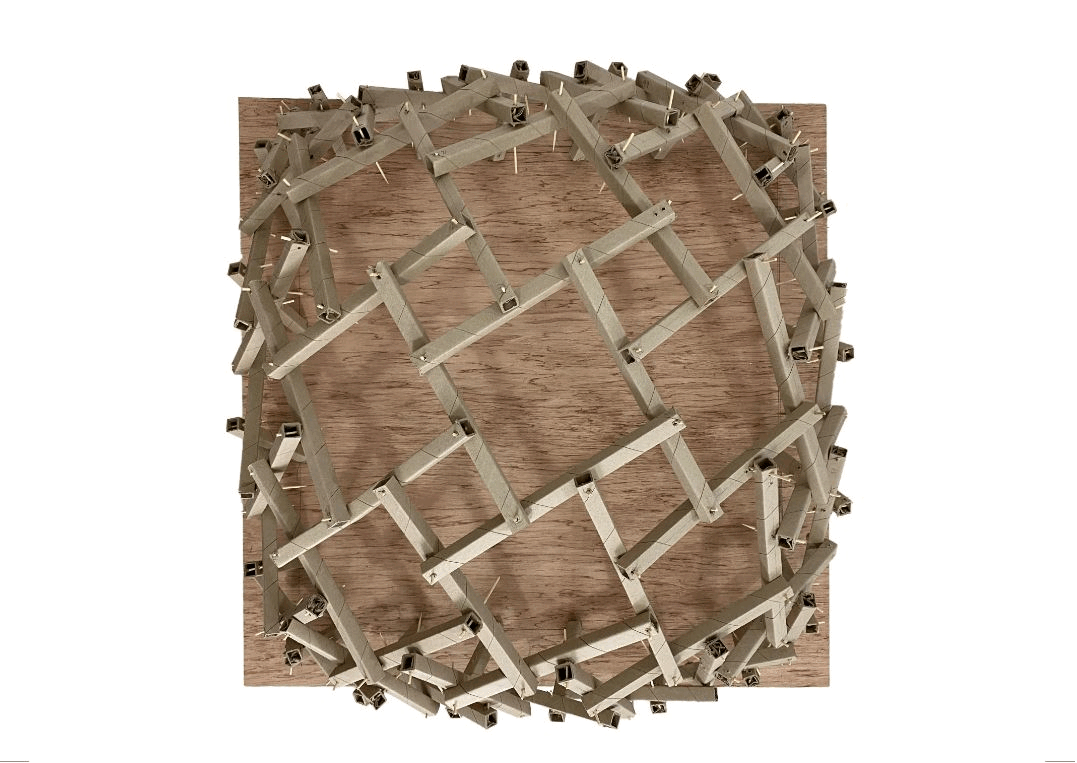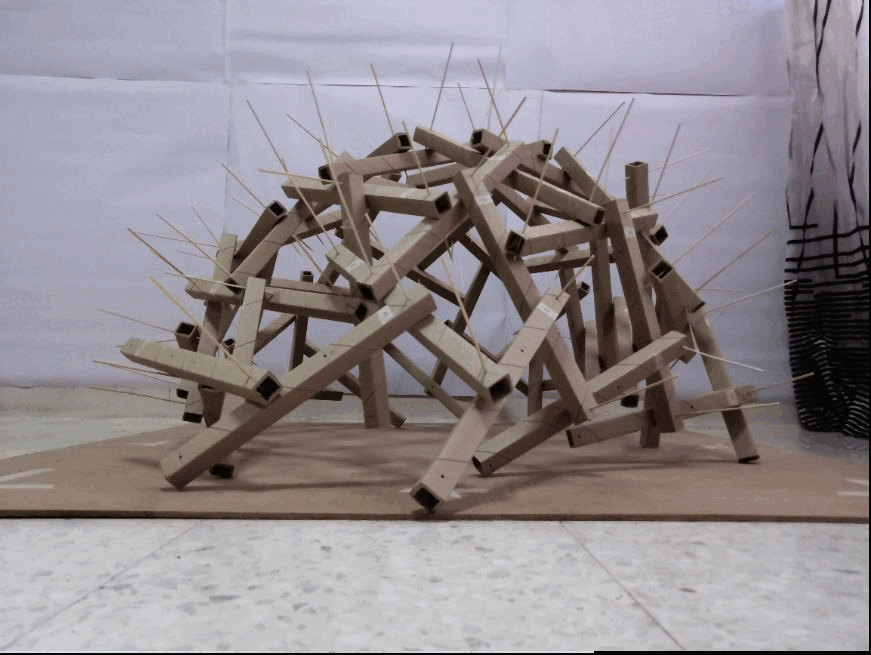Paper Reciprocal
Modular // Joinery
"Explore the limit of paper"
÷
Run by Jan 2020 - Feb 2021
arch.edu

The invention of paper can be dated back to 105 A.D. Since then, paper, a word derived from the plant papyrus, has become one of the most widely used products throughout the world. From stationary to origami, and temporary structures in architecture, paper has been successfully used for a wide variety of applications. However, its potential use as a structure made from a single material has not been widely explored.
Through an assorted genetic algorithm (GA), paper has shown the ability to support dead and live loads without the use of adhesives or additional reinforcements (steel,etc.). Furthermore, the model showed structurally sound results for discrete and non-discrete reciprocal frames made of recycled paper.
50 words
"Reciprocal Study"
In this workshop, we will test our digital results with 10 working prototypes that will be assembled by students. Together, this new information will lead us toward a paper reciprocal frame that can enclose large, unencumbered spaces in short periods of time and bedisassembled and reassembled in different locations with minimal impact on the environment.
In this workshop, we will test our digital results with 10 working prototypes that will be assembled by students. Together, this new information will lead us toward a paper reciprocal frame that can enclose large, unencumbered spaces in short periods of time and bedisassembled and reassembled in different locations with minimal impact on the environment.




Prototype 5



Construct by
Sim Jian Kang . Lum Kar Man .
Ng Jian Zhe
We managed to fix all the joints in a straight line for each side. First we measured the distances of each joints in Rhino model. Next, we drilled the screws into the plywood according to the marked points. As the members are hollow, we just inserted them into the screws. With the fixed joints, the errors of the model are reduced massively. All the supporting members are touching the ground, even the hardest part of the model, the four corners can be adjusted into the right angle. The height of the model was 60cm before fixing the joints. It is now 55cm which is very close to the rhino model height (50cm)
Prototype 6



Construct by
On Zi Shan . Fan Khai Jing . Gilbert Tan Hong Tzer . Soh Hoo Ze Xiang
As stated in previous problem, most of our end couldnt be in contact to the ground, therefore this prototype we propose to follow the stand point of the members instead of their intersection point for member 61 - 84. The edges member 61,84, 79,78, 73,72, 67, 66 is joint lastly as an overall support. After member 58 could not continue to construct because the skewer in previous part broke, didnt get to support the member and maintain the shape. Hence, caused some part of the prototype collapse and not able to connect to each other due to the tension.
Paper Reciprocal
Lecturer
Doris Quek Shu Han
Contributed by
Collabrators
Office for Design Evolution (ODE) . Web Structures Sdn Bhd
Undergraduates
Chia Yi Hen .Fan Khai Jing . Gilbert Tan Hong Tzer . Guma Sylvester Makajil . Helen Lim Xin Ying . John Lau Yong Hao . Khoo Li Wen . Koh Qin Zheng . Lau Yee Seng . Lim Zhuan Yang . Lum Kar Man . Lum Wen Hao . Ng Jian Zhe . Noah Iskandar Bin Fuad . On Zi Shan . Pang Jian Sheng . Sim Jian Kiang . Soh Hoo Ze Xiang . Tan Jia Ming . Teh Yong Peng . Tey Yu Xuan . Tong Lai Mun Joanne . Yap Yi Yang